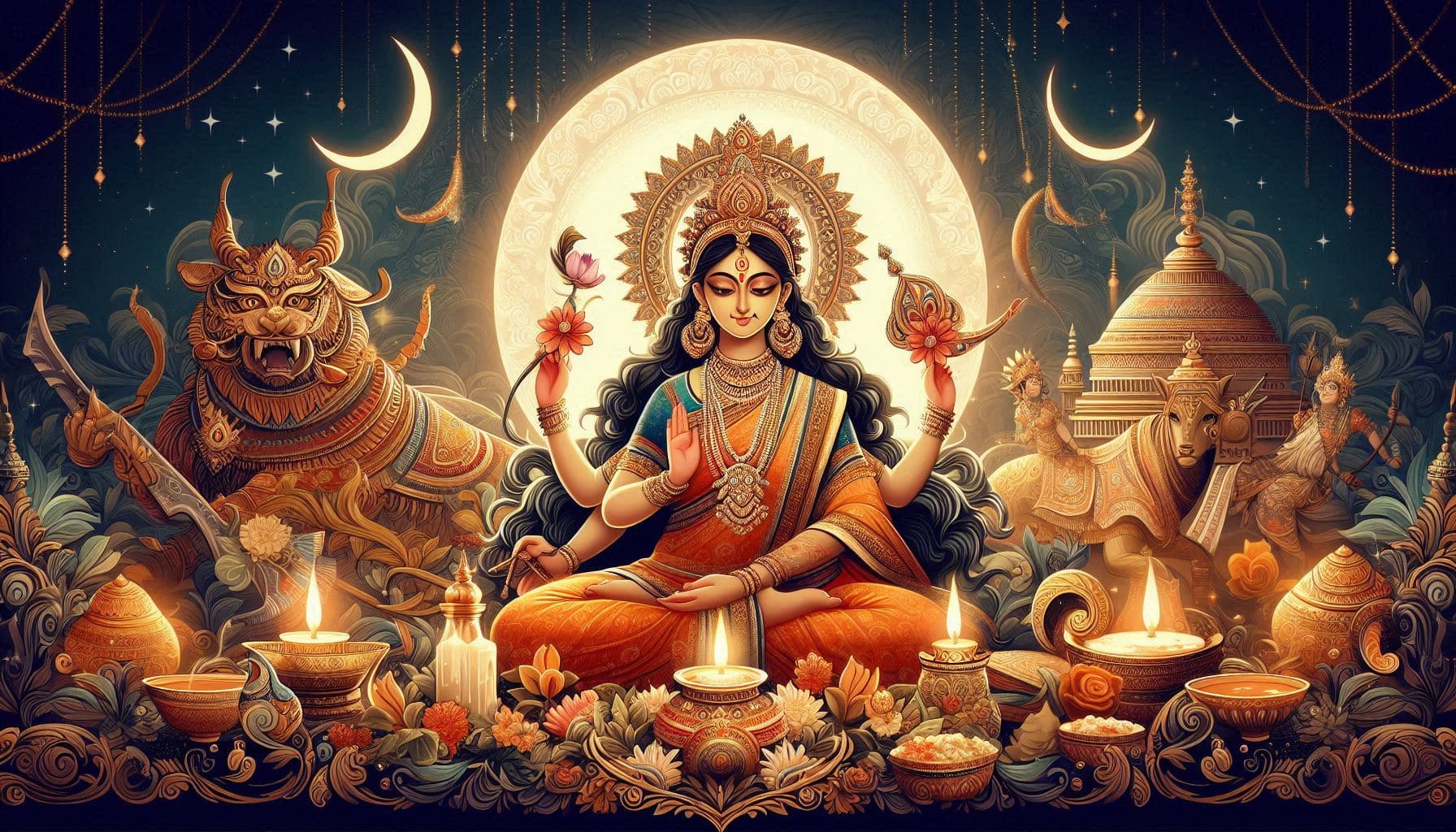
Informative
Navratri Rituals: From Ghat Sthapana to Kanya Pujan
Navratri, the sacred festival of nine nights, is a time of profound devotion, spiritual awakening, and the invocation of Shakti—the cosmic feminine energy. This auspicious period occurs twice a year, during Chaitra (spring) and Ashwin (autumn), and is dedicated to the worship of Goddess Durga, also known as Adi Shakti. In the Vedic tradition, Adi Shakti is the primordial power from which all existence emerges, the very essence of creation, preservation, and destruction.
During Navratri, the sacred flame of the Goddess is kindled in homes and temples, illuminating the path of devotees with divine blessings. The practice of lighting a diya (lamp) signifies the dispelling of ignorance (Tamas) and the awakening of higher consciousness (Satva).
Sadhana: The Path to Divine Fulfillment
Householders and spiritual seekers alike engage in intense worship of Goddess Durga with body, mind, and wealth, seeking divine grace to fulfill their desires and overcome physical and karmic afflictions. In Bengal, the tradition of establishing a Ghat—a sacred vessel representing the Goddess—signifies the invocation of her divine presence. On Dashami, she bid farewell through immersion in water, symbolizing the dissolution of individual ego into the cosmic consciousness.
On the first day of Navratri, devotees sow barley seeds, a ritual deeply rooted in Tantra. The sprouting of these seeds represents the growth of spiritual energy (Shakti) within the seeker. Fasting is also observed, with some maintaining their fast by keeping a cardamom in their mouth—a practice that enhances pranic energy and aligns with Ayurvedic principles of purification. This rigorous discipline reflects the heights of a Sadhak’s (spiritual aspirant’s) devotion and austerity.
The Sacred Worship of the Goddess and Ashta Matrikas
Ashtami, the eighth day of Navratri, holds immense significance as most devotees offer special prayers to the Goddess. The worship of small girls, known as Kanjak Pujan, symbolizes the veneration of Shakti in her purest and most untainted form. These young girls represent the divine energy of the Goddess herself and are offered prasad in the form of gram, halwa, puri, and coconut. Some people observe this ritual on Navami as well.
Poojan is traditionally concluded on Ashtami, as it is believed that the Ashta Matrikas (eight divine manifestations of Shakti) originated from the cosmic energies of Brahma, Vishnu, Mahesh (Shiva), Varaha (an incarnation of Vishnu), Narayana, Kartikeya, Indra, and Yama. These eight divine forms—Brahmi, Vaishnavi, Maheshwari, Varahi, Kumari, Mahendri, Yogeshwari, and Yami—represent the different aspects of cosmic power.
According to sacred texts, Lord Brahma, the creator of the universe, first performed the ritualistic worship of these Ashta Matrikas on Ashtami Tithi. The following day, Kanjak Puja is performed along with Langur Puja, in which young boys representing Bhairava (Shiva’s fierce aspect) are also honored. Worshipping girls up to ten years of age is considered highly auspicious, as each age represents a different form of the Goddess with specific blessings.
The Nine Forms of Kanya Pujan and Their Divine Blessings
Kumari (2 years old): Worshipping her grants prosperity, longevity, strength, and growth.
Trimurti (3 years old): Offers the divine blessing of progeny and the fulfillment of family happiness.
Kalyani (4 years old): Fulfills all wishes and grants overall well-being.
Rohini (5 years old): Bestows health and the destruction of diseases.
Kalika (6 years old): Provides protection from enemies and dispels fear.
Shambhavi (7 years old): Removes obstacles in work and ensures victory in legal matters.
Subhadra (8 years old): Brings prosperity and abundance.
Navratri as a Gateway to Spiritual Awakening
The nine nights of Navratri are a sacred period for invoking the different aspects of the Divine Mother and aligning ourselves with her supreme energy. Each night corresponds to a stage of inner transformation, where the seeker moves from ignorance to wisdom, from bondage to liberation.
On the first day of Navratri, it is considered auspicious to place a bright red cloth near the idol of Maa Durga. This red cloth, infused with the divine vibrations of nine days of worship, can later be kept as a sacred talisman to attract blessings and fulfill all desires.
Navratri is not just a festival but a divine process of rejuvenation, where the Goddess, in her multiple forms, guides us toward inner strength, spiritual realization, and the fulfillment of life’s highest purposes. Through disciplined worship, fasting, and devotion, one can dissolve karmic barriers and awaken the latent divine energy within, ultimately leading to success, happiness, and enlightenment.
May the blessings of Maa Durga illuminate our hearts and lives, guiding us on the path of Dharma and self-realization.
Post a Comment
-
Subscribe to Our Blog
-
Categories
-
Popular Articles



